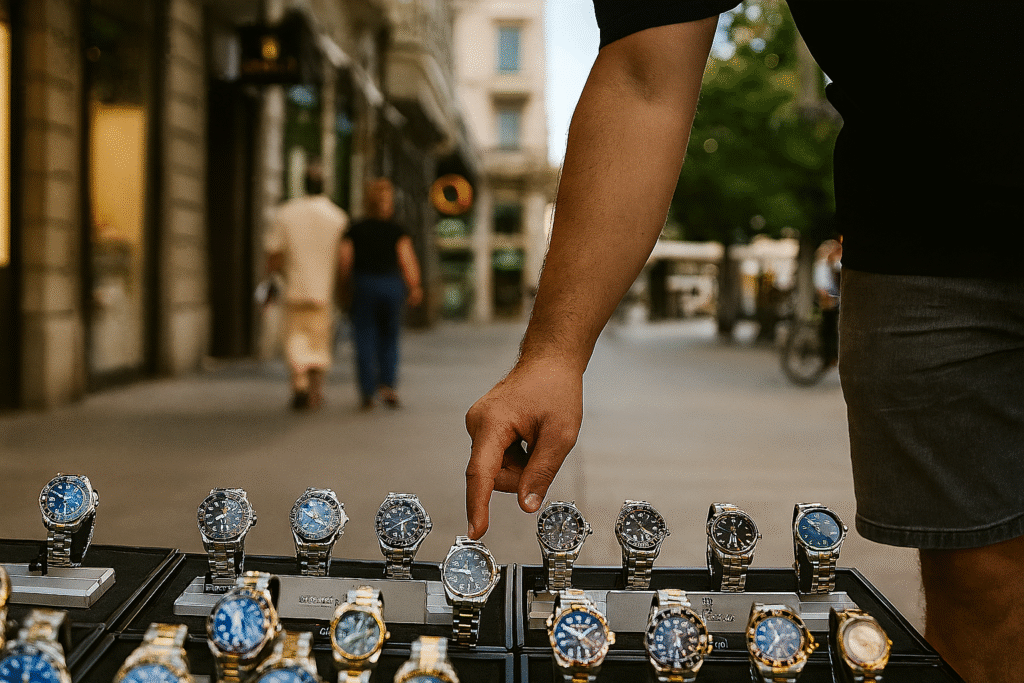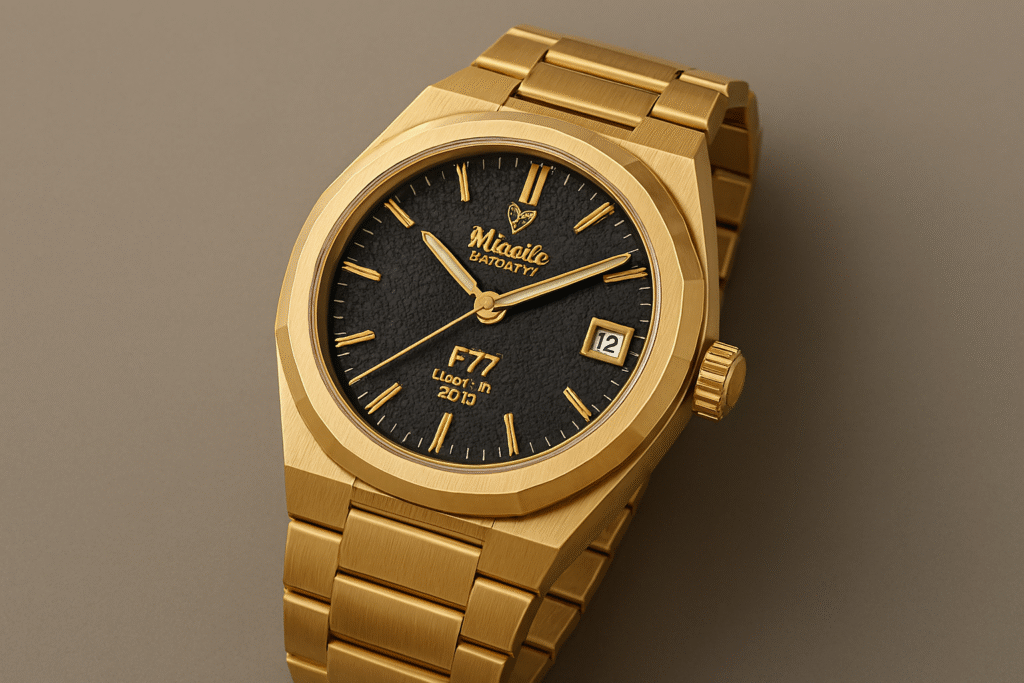This guide helps you identify fake Rolexes in Geneva’s famous watch district. Learn to spot counterfeits through weight, movement, engravings, and documents. Includes buyer mistakes and safe shopping tips.
Even in the heart of Switzerland’s watchmaking capital, fake Rolexes are common. Geneva’s Rue du Rhône attracts both serious collectors and opportunistic sellers. If you plan to shop here, you need to know how to separate genuine craftsmanship from clever fakes.
Signs of a Fake Rolex
- Weight test: Real Rolex watches feel heavy due to high-quality metals. A light case usually signals a fake.
- Movement check: Authentic Rolex models have smooth sweeping hands. Jerky or ticking motions point to counterfeits.
- Engravings: Look closely at the crown logo, caseback, and rehaut. Sloppy or shallow markings reveal a fake.
- Cyclops lens: On real Rolexes, the date magnifier enlarges numbers by 2.5x. Many fakes fail to achieve this clarity.
- Sound: A genuine Rolex runs almost silently. If you hear a loud tick, walk away.
Where Buyers Go Wrong
- Street vendors near Rue du Rhône often sell “bargain” Rolexes that are counterfeit.
- Some tourist shops mix authentic watches with replicas, making it confusing for buyers.
- Buying without proper papers or warranty cards is a red flag.
How You Can Protect Yourself
- Shop at official Rolex boutiques or authorized dealers only.
- Always ask for the warranty card and original box.
- Compare prices online before entering Geneva’s watch district.
- If a deal looks too good to be true, it probably is.
Ask Yourself Before Buying
- Does the seller have a permanent store or just a stall?
- Are documents and receipts matching the watch’s serial number?
- Do you feel pressured into making a quick purchase?
Geneva offers some of the finest watch shopping experiences in the world. But your experience depends on how carefully you verify authenticity.
Learn how to spot fake Rolexes in Geneva’s Rue du Rhône. Discover key authentication tips, common red flags, and where to shop for genuine Swiss watches.


